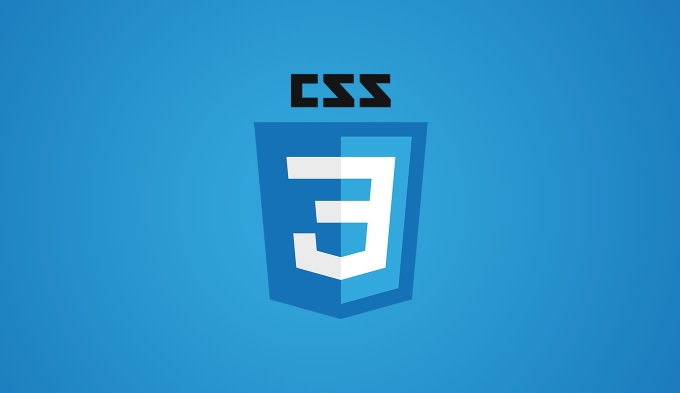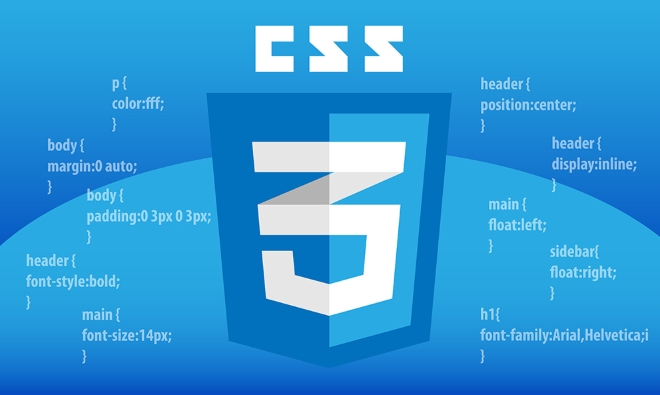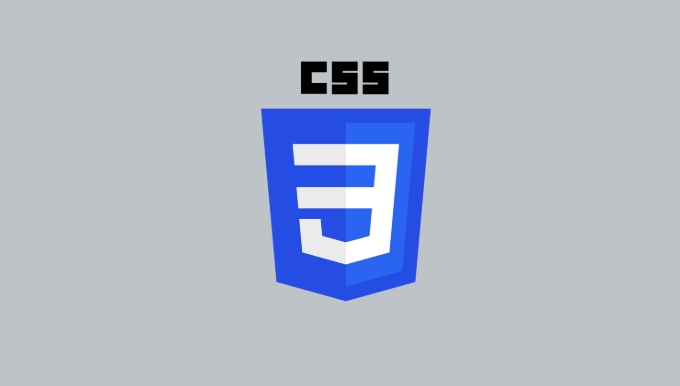CSS variables (custom attributes) improve style maintainability by defining and reusing values. The answer is to use --define variables and call them with var(). 1. Define them in:root, such as --primary-color: #007bff; 2. Use var() to reference them in styles such as background-color: var(--primary-color); 3. Can be used for topic switching and design token reuse; 4. Support fallback values such as var(--color, #333); 5. Can be read and modified dynamically through JavaScript, and finally realize flexible and maintainable CSS.

CSS variables, also known as custom properties , are a way to store and reuse values (like colors, font sizes, spacing, etc.) throughout your stylesheet. They help make your CSS more maintained, consistent, and easier to update.

They're especially useful when you're working on large projects or want to implement themes (like light/dark mode) without repeating values or relying on preprocessors like Sass.
How to Define and Use CSS Variables
CSS variables are defined using the -- prefix, and they're usually set inside a CSS rule block—most commonly on the :root pseudo-class so they're globally available.

1. Define a Variable
:root {
--primary-color: #007bff;
--font-size-large: 1.5rem;
--spacing-unit: 16px;
}-
:rootensures the variables are accessible globally. - You can also define variables inside specific selectors for more scoped usage.
2. Use a Variable with var()
Once defined, use the var() function to access the variable:
.button {
background-color: var(--primary-color);
font-size: var(--font-size-large);
padding: var(--spacing-unit);
}This will apply the values you defined earlier.

Practical Use Cases
? Theme Management (eg, Dark Mode)
You can redefine variables under different conditions using media queries or classes.
:root {
--bg-color: #ffffff;
--text-color: #333333;
}
@media (prefers-color-scheme: dark) {
:root {
--bg-color: #1a1a1a;
--text-color: #f5f5f5;
}
}
body {
background-color: var(--bg-color);
color: var(--text-color);
transition: background-color 0.3s, color 0.3s;
}Or toggle themes via JavaScript:
document.documentElement.style.setProperty('--bg-color', '#000');
? Reusable Design Tokens
Instead of hardcoding values:
.card {
border-radius: 8px;
padding: 16px;
margin-bottom: 16px;
}Use variables:
:root {
--border-radius-md: 8px;
--padding-sm: 16px;
--margin-bottom: 16px;
}
.card {
border-radius: var(--border-radius-md);
padding: var(--padding-sm);
margin-bottom: var(--margin-bottom);
}Now you can change spacing or radii across your site in one place.
Advanced Tips
Fallback values : You can provide a fallback in case the variable is undefined:
color: var(--text-color, #333); /* #333 is used if --text-color doesn't exist */
Variables in variables : You can refer to other variables:
:root { --primary: #007bff; --primary-dark: color-mix(in srgb, var(--primary), black 20%); }Note:
color-mix()and other color functions work in modern browsers.JavaScript interaction : CSS variables can be read and changed dynamically:
// Get a variable getComputedStyle(document.documentElement).getPropertyValue('--primary-color'); // Set a variable document.documentElement.style.setProperty('--primary-color', 'red');
Scope of CSS Variables
They follow normal CSS cascading rules. Define them on :root for global access, or on specific elements for local scope:
.sidebar {
--bg-color: #f0f0f0;
background: var(--bg-color);
} This --bg-color only applies within .sidebar and its children.
Basically, CSS variables give you dynamic, reusable values right in plain CSS—no preprocessor needed. They're well-supported in modern browsers and make styling more flexible and maintained.
The above is the detailed content of What are CSS variables and how to use them?. For more information, please follow other related articles on the PHP Chinese website!

Hot AI Tools

Undress AI Tool
Undress images for free

Undresser.AI Undress
AI-powered app for creating realistic nude photos

AI Clothes Remover
Online AI tool for removing clothes from photos.

Clothoff.io
AI clothes remover

Video Face Swap
Swap faces in any video effortlessly with our completely free AI face swap tool!

Hot Article

Hot Tools

Notepad++7.3.1
Easy-to-use and free code editor

SublimeText3 Chinese version
Chinese version, very easy to use

Zend Studio 13.0.1
Powerful PHP integrated development environment

Dreamweaver CS6
Visual web development tools

SublimeText3 Mac version
God-level code editing software (SublimeText3)
 CSS tutorial for creating loading spinners and animations
Jul 07, 2025 am 12:07 AM
CSS tutorial for creating loading spinners and animations
Jul 07, 2025 am 12:07 AM
There are three ways to create a CSS loading rotator: 1. Use the basic rotator of borders to achieve simple animation through HTML and CSS; 2. Use a custom rotator of multiple points to achieve the jump effect through different delay times; 3. Add a rotator in the button and switch classes through JavaScript to display the loading status. Each approach emphasizes the importance of design details such as color, size, accessibility and performance optimization to enhance the user experience.
 Addressing CSS Browser Compatibility issues and prefixes
Jul 07, 2025 am 01:44 AM
Addressing CSS Browser Compatibility issues and prefixes
Jul 07, 2025 am 01:44 AM
To deal with CSS browser compatibility and prefix issues, you need to understand the differences in browser support and use vendor prefixes reasonably. 1. Understand common problems such as Flexbox and Grid support, position:sticky invalid, and animation performance is different; 2. Check CanIuse confirmation feature support status; 3. Correctly use -webkit-, -moz-, -ms-, -o- and other manufacturer prefixes; 4. It is recommended to use Autoprefixer to automatically add prefixes; 5. Install PostCSS and configure browserslist to specify the target browser; 6. Automatically handle compatibility during construction; 7. Modernizr detection features can be used for old projects; 8. No need to pursue consistency of all browsers,
 What is the difference between display: inline, display: block, and display: inline-block?
Jul 11, 2025 am 03:25 AM
What is the difference between display: inline, display: block, and display: inline-block?
Jul 11, 2025 am 03:25 AM
Themaindifferencesbetweendisplay:inline,block,andinline-blockinHTML/CSSarelayoutbehavior,spaceusage,andstylingcontrol.1.Inlineelementsflowwithtext,don’tstartonnewlines,ignorewidth/height,andonlyapplyhorizontalpadding/margins—idealforinlinetextstyling
 Creating custom shapes with css clip-path
Jul 09, 2025 am 01:29 AM
Creating custom shapes with css clip-path
Jul 09, 2025 am 01:29 AM
Use the clip-path attribute of CSS to crop elements into custom shapes, such as triangles, circular notches, polygons, etc., without relying on pictures or SVGs. Its advantages include: 1. Supports a variety of basic shapes such as circle, ellipse, polygon, etc.; 2. Responsive adjustment and adaptable to mobile terminals; 3. Easy to animation, and can be combined with hover or JavaScript to achieve dynamic effects; 4. It does not affect the layout flow, and only crops the display area. Common usages are such as circular clip-path:circle (50pxatcenter) and triangle clip-path:polygon (50%0%, 100 0%, 0 0%). Notice
 Styling visited links differently with CSS
Jul 11, 2025 am 03:26 AM
Styling visited links differently with CSS
Jul 11, 2025 am 03:26 AM
Setting the style of links you have visited can improve the user experience, especially in content-intensive websites to help users navigate better. 1. Use CSS's: visited pseudo-class to define the style of the visited link, such as color changes; 2. Note that the browser only allows modification of some attributes due to privacy restrictions; 3. The color selection should be coordinated with the overall style to avoid abruptness; 4. The mobile terminal may not display this effect, and it is recommended to combine it with other visual prompts such as icon auxiliary logos.
 What is the CSS Painting API?
Jul 04, 2025 am 02:16 AM
What is the CSS Painting API?
Jul 04, 2025 am 02:16 AM
TheCSSPaintingAPIenablesdynamicimagegenerationinCSSusingJavaScript.1.DeveloperscreateaPaintWorkletclasswithapaint()method.2.TheyregisteritviaregisterPaint().3.ThecustompaintfunctionisthenusedinCSSpropertieslikebackground-image.Thisallowsfordynamicvis
 How to create responsive images using CSS?
Jul 15, 2025 am 01:10 AM
How to create responsive images using CSS?
Jul 15, 2025 am 01:10 AM
To create responsive images using CSS, it can be mainly achieved through the following methods: 1. Use max-width:100% and height:auto to allow the image to adapt to the container width while maintaining the proportion; 2. Use HTML's srcset and sizes attributes to intelligently load the image sources adapted to different screens; 3. Use object-fit and object-position to control image cropping and focus display. Together, these methods ensure that the images are presented clearly and beautifully on different devices.
 What are common CSS browser inconsistencies?
Jul 26, 2025 am 07:04 AM
What are common CSS browser inconsistencies?
Jul 26, 2025 am 07:04 AM
Different browsers have differences in CSS parsing, resulting in inconsistent display effects, mainly including the default style difference, box model calculation method, Flexbox and Grid layout support level, and inconsistent behavior of certain CSS attributes. 1. The default style processing is inconsistent. The solution is to use CSSReset or Normalize.css to unify the initial style; 2. The box model calculation method of the old version of IE is different. It is recommended to use box-sizing:border-box in a unified manner; 3. Flexbox and Grid perform differently in edge cases or in old versions. More tests and use Autoprefixer; 4. Some CSS attribute behaviors are inconsistent. CanIuse must be consulted and downgraded.






